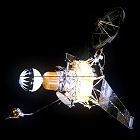 NASA launches the Ranger 5 lunar probe, built by Jet Propulsion Laboratory and intended to go directly to the moon, transmitting pictures of the surface back to Earth until it impacts the lunar surface. An onboard system failure cuts off solar power, leaving Ranger 5 on its limited supply of battery power; by the time it reaches the moon, its power-starved systems have shut down and it’s wide of the mark, missing the moon by 450 miles. A sweeping internal review of the Ranger program commences at both JPL and NASA, with the review boards finding design faults and discovering that the high-heat sterilization process, intended to keep Earthly microbes from contaminating the moon, may also be causing problems. With Ranger now considered a support program for the upcoming Apollo flights to the moon, NASA is under intense scrutiny and replaces the managers of the Ranger project prior to the next launch, also instituting another redesign of the spacecraft.
NASA launches the Ranger 5 lunar probe, built by Jet Propulsion Laboratory and intended to go directly to the moon, transmitting pictures of the surface back to Earth until it impacts the lunar surface. An onboard system failure cuts off solar power, leaving Ranger 5 on its limited supply of battery power; by the time it reaches the moon, its power-starved systems have shut down and it’s wide of the mark, missing the moon by 450 miles. A sweeping internal review of the Ranger program commences at both JPL and NASA, with the review boards finding design faults and discovering that the high-heat sterilization process, intended to keep Earthly microbes from contaminating the moon, may also be causing problems. With Ranger now considered a support program for the upcoming Apollo flights to the moon, NASA is under intense scrutiny and replaces the managers of the Ranger project prior to the next launch, also instituting another redesign of the spacecraft.
 British broadcaster ABC airs the ninth episode of science fiction anthology series Out Of This World. Adapted by Leon Griffiths from a story by Raymond F. Jones, the story stars Bernard Horsfall, and is introduced by Boris Karloff. This episode no longer exists in the archives.
British broadcaster ABC airs the ninth episode of science fiction anthology series Out Of This World. Adapted by Leon Griffiths from a story by Raymond F. Jones, the story stars Bernard Horsfall, and is introduced by Boris Karloff. This episode no longer exists in the archives.
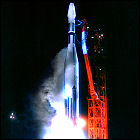 NASA launches its first interplanetary spacecraft, the unmanned space probe Mariner 2, en route to Venus. During its three-month trip from Earth to Venus, Mariner 2 takes measurements of solar wind, charged particles, and an experiment is included to measure the amount of dust and micrometeoroids between the two planets. The probe briefly loses attitude control several times in flight, but regains proper orientation in each instance.
NASA launches its first interplanetary spacecraft, the unmanned space probe Mariner 2, en route to Venus. During its three-month trip from Earth to Venus, Mariner 2 takes measurements of solar wind, charged particles, and an experiment is included to measure the amount of dust and micrometeoroids between the two planets. The probe briefly loses attitude control several times in flight, but regains proper orientation in each instance. NASA and the United States Weather Bureau launch the sixth experimental TIROS weather satellite, TIROS-6. Launched specifically to allow for better detection of storms during the 1962 Atlantic hurricane season, TIROS-6 has a full workload within days of launch as Hurricane Daisy forms in the Caribbean Sea and makes its way to New England. TIROS-6 finally provides a successful test for NASA’s attempts to keep a weather satellite in service for long-duration missions, lasting over a year in orbit.
NASA and the United States Weather Bureau launch the sixth experimental TIROS weather satellite, TIROS-6. Launched specifically to allow for better detection of storms during the 1962 Atlantic hurricane season, TIROS-6 has a full workload within days of launch as Hurricane Daisy forms in the Caribbean Sea and makes its way to New England. TIROS-6 finally provides a successful test for NASA’s attempts to keep a weather satellite in service for long-duration missions, lasting over a year in orbit.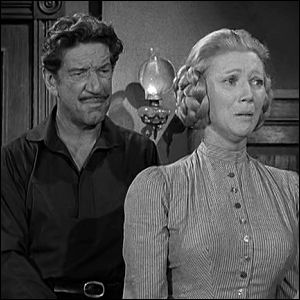 The 195th episode of Sam Rolfe’s western series Have Gun – Will Travel is broadcast on CBS in the United States, starring Richard Boone. This episode is written by future Star Trek creator Gene Roddenberry and directed by Boone.
The 195th episode of Sam Rolfe’s western series Have Gun – Will Travel is broadcast on CBS in the United States, starring Richard Boone. This episode is written by future Star Trek creator Gene Roddenberry and directed by Boone. 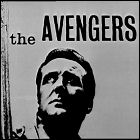 The 27th episode of Sydney Newman’s spy series The Avengers, starring Patrick Macnee, airs on UK broadcaster ABC, opening the show’s second season. Honor Blackman joins the cast as Cathy Gale.
The 27th episode of Sydney Newman’s spy series The Avengers, starring Patrick Macnee, airs on UK broadcaster ABC, opening the show’s second season. Honor Blackman joins the cast as Cathy Gale.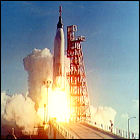 Astronaut Wally Schirra is the third American to orbit Earth, aboard the Mercury 8 capsule (nicknamed Sigma 7). He remains in orbit for just over nine hours in the cramped quarters of the Mercury spacecraft before splashing down.
Astronaut Wally Schirra is the third American to orbit Earth, aboard the Mercury 8 capsule (nicknamed Sigma 7). He remains in orbit for just over nine hours in the cramped quarters of the Mercury spacecraft before splashing down. Working at General Electric’s New York R&D lab, scientist Nick Holonyak fires up the first working visible-spectrum light-emitting diode, producing a single small red light. (Texas Instruments had already created infrared LEDs the year before.) Too expensive to mass-produce initially, LEDs will become commonplace in calculators and other electronic devices in the 1970s, though more modern variants in the 1990s will lead to a revolution in lighting and display technology, resulting in flat-screen computer monitors and televisions and spinoff technology such as tablet computers and portable telephones with LED-based touchscreens – all unimaginable in
Working at General Electric’s New York R&D lab, scientist Nick Holonyak fires up the first working visible-spectrum light-emitting diode, producing a single small red light. (Texas Instruments had already created infrared LEDs the year before.) Too expensive to mass-produce initially, LEDs will become commonplace in calculators and other electronic devices in the 1970s, though more modern variants in the 1990s will lead to a revolution in lighting and display technology, resulting in flat-screen computer monitors and televisions and spinoff technology such as tablet computers and portable telephones with LED-based touchscreens – all unimaginable in  NASA launches the Ranger 5 lunar probe, built by Jet Propulsion Laboratory and intended to go directly to the moon, transmitting pictures of the surface back to Earth until it impacts the lunar surface. An onboard system failure cuts off solar power, leaving Ranger 5 on its limited supply of battery power; by the time it reaches the moon, its power-starved systems have shut down and it’s wide of the mark, missing the moon by 450 miles. A sweeping internal review of the Ranger program commences at both JPL and NASA, with the review boards finding design faults and discovering that the high-heat sterilization process, intended to keep Earthly microbes from contaminating the moon, may also be causing problems. With Ranger now considered a support program for the upcoming Apollo flights to the moon, NASA is under intense scrutiny and replaces the managers of the Ranger project prior to the next launch, also instituting another redesign of the spacecraft.
NASA launches the Ranger 5 lunar probe, built by Jet Propulsion Laboratory and intended to go directly to the moon, transmitting pictures of the surface back to Earth until it impacts the lunar surface. An onboard system failure cuts off solar power, leaving Ranger 5 on its limited supply of battery power; by the time it reaches the moon, its power-starved systems have shut down and it’s wide of the mark, missing the moon by 450 miles. A sweeping internal review of the Ranger program commences at both JPL and NASA, with the review boards finding design faults and discovering that the high-heat sterilization process, intended to keep Earthly microbes from contaminating the moon, may also be causing problems. With Ranger now considered a support program for the upcoming Apollo flights to the moon, NASA is under intense scrutiny and replaces the managers of the Ranger project prior to the next launch, also instituting another redesign of the spacecraft.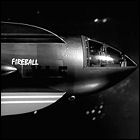 UK broadcaster ATV Midlands premieres
UK broadcaster ATV Midlands premieres 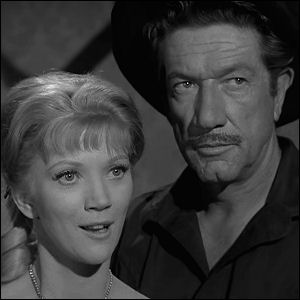 The 204th episode of Sam Rolfe’s western series Have Gun – Will Travel is broadcast on CBS in the United States, starring Richard Boone. This episode is written by future Star Trek creator Gene Roddenberry.
The 204th episode of Sam Rolfe’s western series Have Gun – Will Travel is broadcast on CBS in the United States, starring Richard Boone. This episode is written by future Star Trek creator Gene Roddenberry.  NASA launches the experimental, RCA-built Relay 1 communications satellite. This is the first satellite to relay television signals from the United States to Japan, including the first word of the assassination of President Kennedy in
NASA launches the experimental, RCA-built Relay 1 communications satellite. This is the first satellite to relay television signals from the United States to Japan, including the first word of the assassination of President Kennedy in  NASA’s unmanned Mariner 2 probe is the first unmanned spacecraft to successfully reach and take measuresments of another planet in the solar system. Passing by Venus at a distance of 25,000 miles, Mariner 2 detects a cool atmosphere with a blistering hot surface underneath it – quickly dispelling any hopes of finding life there. Mariner 2 isn’t equipped with any cameras, which is just as well: unless any cameras had ultraviolet filters, they would have seen nothing but featureless clouds at Venus. Mariner 2 continues on into a solar orbit, shutting down early in 1963.
NASA’s unmanned Mariner 2 probe is the first unmanned spacecraft to successfully reach and take measuresments of another planet in the solar system. Passing by Venus at a distance of 25,000 miles, Mariner 2 detects a cool atmosphere with a blistering hot surface underneath it – quickly dispelling any hopes of finding life there. Mariner 2 isn’t equipped with any cameras, which is just as well: unless any cameras had ultraviolet filters, they would have seen nothing but featureless clouds at Venus. Mariner 2 continues on into a solar orbit, shutting down early in 1963.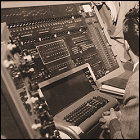 In the Hillsboro Press-Gazette, ENIAC and UNIVAC co-creator Dr. John Mauchly predicts that there will come “a time when everyone will carry his own personal computer”, even going so far as to anticipate portable “hand computers” used for such tasks as interactive shopping lists. Mauchly’s predictions aren’t 100% accurate, however: by the 21st century, groceries do not arrive via delivery chutes in every home, and he fails to anticipate the use of “hand computers” to access social networks or view amusingly captioned photos of cats.
In the Hillsboro Press-Gazette, ENIAC and UNIVAC co-creator Dr. John Mauchly predicts that there will come “a time when everyone will carry his own personal computer”, even going so far as to anticipate portable “hand computers” used for such tasks as interactive shopping lists. Mauchly’s predictions aren’t 100% accurate, however: by the 21st century, groceries do not arrive via delivery chutes in every home, and he fails to anticipate the use of “hand computers” to access social networks or view amusingly captioned photos of cats.